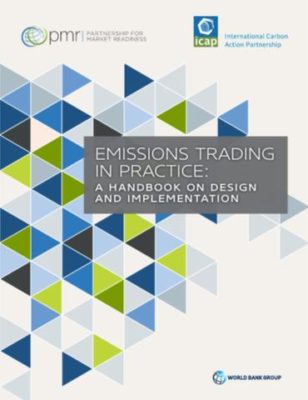World Bank Partnership for Market Readiness and International Carbon Action Partnership

As the world moves on from the climate agreement negotiated in Paris, attention is turning from the identification of emissions reduction trajectories—in the form of Nationally Determined Contributions (NDCs)—to crucial questions about how these emissions reductions are to be delivered and reported within the future international accounting framework. The experience to date shows that, if well designed, emissions trading systems (ETS) can be an effective, credible, and transparent tool for helping to achieve low-cost emissions reductions in ways that mobilize private sector actors, attract investment, and encourage international cooperation. However, to maximize effectiveness, any ETS needs to be designed in a way that is appropriate to its context. This Handbook is intended to help decision makers, policy practitioners, and stakeholders achieve this goal. It explains the rationale for an ETS, and sets out a 10-step process for designing an ETS – each step involves a series of decisions or actions that will shape major features of the policy. In doing so, it draws both on conceptual analysis and on some of the most important practical lessons learned to date from implementing ETSs around the world, including from the European Union, several provinces and cities in China, California and Québec, the Northeastern United States, Alberta, New Zealand, Kazakhstan, the Republic of Korea, Tokyo, and Saitama.
Full text: “Emissions Trading in Practice : A Handbook on Design and Implementation” (also available in Chinese 中文, Spanish, and other languages)
Handbook written under contract with the World Bank Partnership for Market Readiness and the International Carbon Action Partnership. (I was part of a six-member author team at Environmental Defense Fund and Motu Economic and Public Policy Research, working with dozens of experts, including a team at Vivid Economics.)
Citation:
Kerr, Suzi, Ruben Lubowski, John Ward, Cor Marijs, Paul Sammon, Pierre Guigon, Constanze Haug, William Acworth, Catherine Leining, Leah Murphy, Gernot Wagner, Katherine Rittenhouse, Michael Mehling, Michael Arthur, Felix Christian Matthes, Maosheng Duan. Emissions Trading in Practice: A Handbook on Design and Implementation. World Bank, Washington, DC (2016).